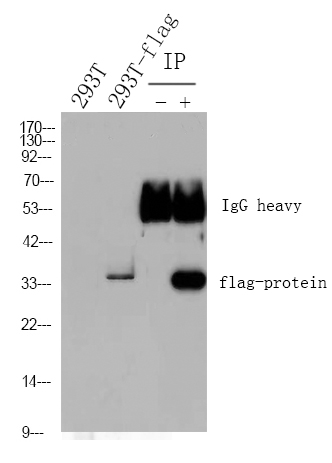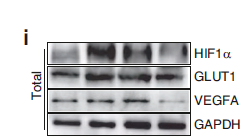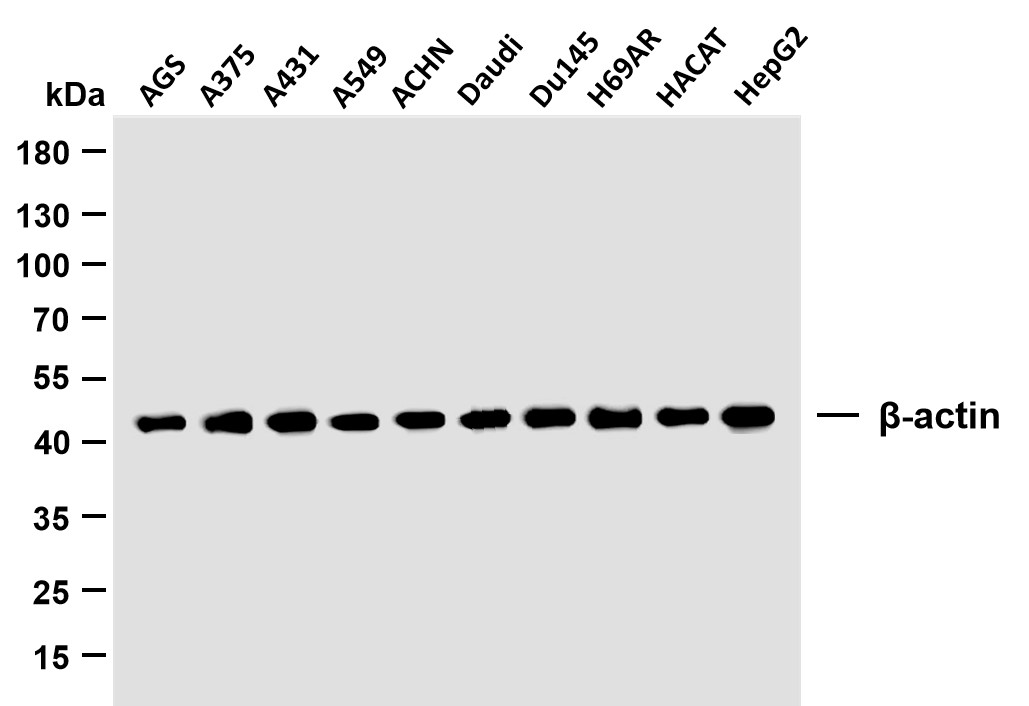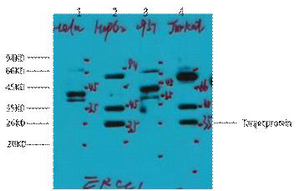
主要信息
Target
CACNA1C
Host Species
Rabbit
Reactivity
Human, Mouse, Rat
Applications
WB
MW
244kD (Calculated)
Conjugate/Modification
Phospho
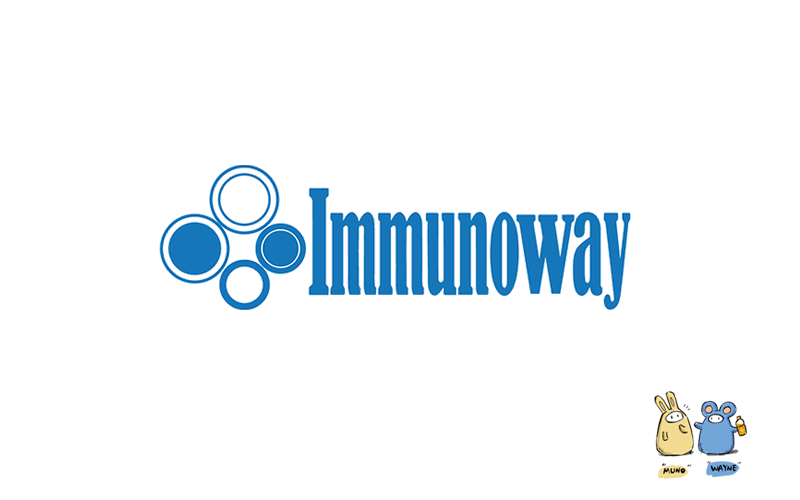
货号: YP1717
规格
价格
货期
数量
200μL
¥4,680.00
两周
0
100μL
¥2,800.00
两周
0
50μL
¥1,500.00
两周
0
加入购物车


已收藏


收藏
详细信息
推荐稀释比
WB 1:500-2000
组成
Liquid in PBS containing 50% glycerol, 0.5% BSA and 0.02% sodium azide.
特异性
This antibody detects endogenous levels of CACNA1C (Phospho-Ser1981) at Human, Mouse,Rat.The name of modified sites may be influenced by many factors, such as species (the modified site was not originally found in human samples) and the change of protein sequence (the previous protein sequence is incomplete, and the protein sequence may be prolonged with the development of protein sequencing technology). When naming, we will use the "numbers" in historical reference to keep the sites consistent with the reports. The antibody binds to the following modification sequence (lowercase letters are modification sites):RAsFH
纯化工艺
The antibody was affinity-purified from rabbit serum by affinity-chromatography using specific immunogen.
储存
-15°C to -25°C/1 year(Do not lower than -25°C)
浓度
1 mg/ml
理论分子量
244kD
修饰
Phospho
克隆性
Polyclonal
同种型
IgG
相关产品
抗原&靶点信息
免疫原:
Synthesized peptide derived from human CACNA1C (Phospho-Ser1981)
展开内容
特异性:
This antibody detects endogenous levels of CACNA1C (Phospho-Ser1981) at Human, Mouse,Rat.The name of modified sites may be influenced by many factors, such as species (the modified site was not originally found in human samples) and the change of protein sequence (the previous protein sequence is incomplete, and the protein sequence may be prolonged with the development of protein sequencing technology). When naming, we will use the "numbers" in historical reference to keep the sites consistent with the reports. The antibody binds to the following modification sequence (lowercase letters are modification sites):RAsFH
展开内容
基因名称:
CACNA1C CACH2 CACN2 CACNL1A1 CCHL1A1
展开内容
蛋白名称:
CACNA1C (Phospho-Ser1981)
展开内容
别名:
Voltage-dependent L-type calcium channel subunit alpha-1C ;
Calcium channel, L type, alpha-1 polypeptide, isoform 1, cardiac muscle ;
Voltage-gated calcium channel subunit alpha Cav1.2 ;
Calcium channel, L type, alpha-1 polypeptide, isoform 1, cardiac muscle ;
Voltage-gated calcium channel subunit alpha Cav1.2 ;
展开内容
背景:
calcium voltage-gated channel subunit alpha1 C(CACNA1C) Homo sapiens This gene encodes an alpha-1 subunit of a voltage-dependent calcium channel. Calcium channels mediate the influx of calcium ions into the cell upon membrane polarization. The alpha-1 subunit consists of 24 transmembrane segments and forms the pore through which ions pass into the cell. The calcium channel consists of a complex of alpha-1, alpha-2/delta, beta, and gamma subunits in a 1:1:1:1 ratio. There are multiple isoforms of each of these proteins, either encoded by different genes or the result of alternative splicing of transcripts. The protein encoded by this gene binds to and is inhibited by dihydropyridine. Alternative splicing results in many transcript variants encoding different proteins. Some of the predicted proteins may not produce functional ion channel subunits. [provided by RefSeq, Oct 2012],
展开内容
功能:
Alternative products:Additional isoforms seem to exist. Exons 8A, 21, 22, 31, 32, 33, 40B, 43A, 41A and 45 are alternatively spliced in a variety of combinations. Experimental confirmation may be lacking for some isoforms,Disease:Defects in CACNA1C are the cause of Brugada syndrome type 3 (BRS3) [MIM:611875]. BRS3 is a heart disease characterized by the association of Brugada syndrome with shortened QT intervals. Brugada syndrome is a tachyarrhythmia characterized by right bundle branch block and ST segment elevation on an electrocardiogram (ECG). It can cause the ventricles to beat so fast that the blood is prevented from circulating efficiently in the body. When this situation occurs (called ventricular fibrillation), the individual will faint and may die in a few minutes if the heart is not reset.,Disease:Defects in CACNA1C are the cause of Timothy syndrome (TS) [MIM:601005]. TS is a disorder characterized by multiorgan dysfunction including lethal arrhythmias, webbing of fingers and toes, congenital heart disease, immune deficiency, intermittent hypoglycemia, cognitive abnormalities and autism.,Domain:Binding of intracellular calcium through the EF-hand motif inhibits the opening of the channel.,Domain:Each of the four internal repeats contains five hydrophobic transmembrane segments (S1, S2, S3, S5, S6) and one positively charged transmembrane segment (S4). S4 segments probably represent the voltage-sensor and are characterized by a series of positively charged amino acids at every third position.,Function:Voltage-sensitive calcium channels (VSCC) mediate the entry of calcium ions into excitable cells and are also involved in a variety of calcium-dependent processes, including muscle contraction, hormone or neurotransmitter release, gene expression, cell motility, cell division and cell death. The isoform alpha-1C gives rise to L-type calcium currents. Long-lasting (L-type) calcium channels belong to the 'high-voltage activated' (HVA) group. They are blocked by dihydropyridines (DHP), phenylalkylamines, benzothiazepines, and by omega-agatoxin-IIIA (omega-Aga-IIIA). They are however insensitive to omega-conotoxin-GVIA (omega-CTx-GVIA) and omega-agatoxin-IVA (omega-Aga-IVA). Calcium channels containing the alpha-1C subunit play an important role in excitation-contraction coupling in the heart. The various isoforms display marked differences in the sensitivity to DHP compounds.,PTM:Phosphorylation by PKA activates the channel.,similarity:Belongs to the calcium channel alpha-1 subunit (TC 1.A.1.11) family.,subunit:Voltage-dependent calcium channels are multisubunit complexes, consisting of alpha-1, alpha-2, beta and delta subunits in a 1:1:1:1 ratio. The channel activity is directed by the pore-forming and voltage-sensitive alpha-1 subunit. In many cases, this subunit is sufficient to generate voltage-sensitive calcium channel activity. The auxiliary subunits beta and alpha-2/delta linked by a disulfide bridge regulate the channel activity. Interacts with CACNA2D4.,tissue specificity:Expressed in brain, heart, jejunum, ovary, pancreatic beta-cells and vascular smooth muscle. Overall expression is reduced in atherosclerotic vascular smooth muscle.,
展开内容
细胞定位:
Cell membrane ; Multi-pass membrane protein . Cell membrane, sarcolemma ; Multi-pass membrane protein . Perikaryon . Cell junction, synapse, postsynaptic density membrane . Cell projection, dendrite . Cell membrane, sarcolemma, T-tubule . Colocalizes with ryanodine receptors in distinct clusters at the junctional membrane, where the sarcolemma and the sarcoplasmic reticulum are in close contact. The interaction between RRAD and CACNB2 promotes the expression of CACNA1C at the cell membrane. .
展开内容
组织表达:
Detected throughout the brain, including hippocampus, cerebellum and amygdala, throughout the heart and vascular system, including ductus arteriosus, in urinary bladder, and in retina and sclera in the eye (PubMed:15454078). Expressed in brain, heart, jejunum, ovary, pancreatic beta-cells and vascular smooth muscle. Overall expression is reduced in atherosclerotic vascular smooth muscle.
展开内容
研究领域:
>>MAPK signaling pathway ;
>>Calcium signaling pathway ;
>>cGMP-PKG signaling pathway ;
>>cAMP signaling pathway ;
>>Cardiac muscle contraction ;
>>Adrenergic signaling in cardiomyocytes ;
>>Vascular smooth muscle contraction ;
>>Circadian entrainment ;
>>Long-term potentiation ;
>>Retrograde endocannabinoid signaling ;
>>Glutamatergic synapse ;
>>Cholinergic synapse ;
>>Serotonergic synapse ;
>>GABAergic synapse ;
>>Dopaminergic synapse ;
>>Taste transduction ;
>>Insulin secretion ;
>>GnRH signaling pathway ;
>>Oxytocin signaling pathway ;
>>Renin secretion ;
>>Aldosterone synthesis and secretion ;
>>Cortisol synthesis and secretion ;
>>GnRH secretion ;
>>Type II diabetes mellitus ;
>>Cushing syndrome ;
>>Growth hormone synthesis, secretion and action ;
>>Alzheimer disease ;
>>Prion disease ;
>>Pathways of neurodegeneration - multiple diseases ;
>>Amphetamine addiction ;
>>Chemical carcinogenesis - receptor activation ;
>>Hypertrophic cardiomyopathy ;
>>Arrhythmogenic right ventricular cardiomyopathy ;
>>Dilated cardiomyopathy
>>Calcium signaling pathway ;
>>cGMP-PKG signaling pathway ;
>>cAMP signaling pathway ;
>>Cardiac muscle contraction ;
>>Adrenergic signaling in cardiomyocytes ;
>>Vascular smooth muscle contraction ;
>>Circadian entrainment ;
>>Long-term potentiation ;
>>Retrograde endocannabinoid signaling ;
>>Glutamatergic synapse ;
>>Cholinergic synapse ;
>>Serotonergic synapse ;
>>GABAergic synapse ;
>>Dopaminergic synapse ;
>>Taste transduction ;
>>Insulin secretion ;
>>GnRH signaling pathway ;
>>Oxytocin signaling pathway ;
>>Renin secretion ;
>>Aldosterone synthesis and secretion ;
>>Cortisol synthesis and secretion ;
>>GnRH secretion ;
>>Type II diabetes mellitus ;
>>Cushing syndrome ;
>>Growth hormone synthesis, secretion and action ;
>>Alzheimer disease ;
>>Prion disease ;
>>Pathways of neurodegeneration - multiple diseases ;
>>Amphetamine addiction ;
>>Chemical carcinogenesis - receptor activation ;
>>Hypertrophic cardiomyopathy ;
>>Arrhythmogenic right ventricular cardiomyopathy ;
>>Dilated cardiomyopathy
展开内容
信号通路
Organismal Systems >> Endocrine system >> Insulin secretion
Organismal Systems >> Endocrine system >> GnRH signaling pathway
Organismal Systems >> Endocrine system >> Oxytocin signaling pathway
Organismal Systems >> Endocrine system >> Growth hormone synthesis, secretion and action
Organismal Systems >> Endocrine system >> Aldosterone synthesis and secretion
Organismal Systems >> Circulatory system >> Cardiac muscle contraction
Organismal Systems >> Circulatory system >> Adrenergic signaling in cardiomyocytes
Organismal Systems >> Circulatory system >> Vascular smooth muscle contraction
Organismal Systems >> Nervous system >> Glutamatergic synapse
Organismal Systems >> Nervous system >> Cholinergic synapse
Organismal Systems >> Nervous system >> Dopaminergic synapse
Human Diseases >> Neurodegenerative disease >> Alzheimer disease
Human Diseases >> Neurodegenerative disease >> Prion disease
Human Diseases >> Neurodegenerative disease >> Pathways of neurodegeneration - multiple diseases
Environmental Information Processing >> Signal transduction >> MAPK signaling pathway
Environmental Information Processing >> Signal transduction >> Calcium signaling pathway
Environmental Information Processing >> Signal transduction >> cAMP signaling pathway
Environmental Information Processing >> Signal transduction >> cGMP-PKG signaling pathway
文献引用({{totalcount}})
货号: YP1717
规格
价格
货期
数量
200μL
¥4,680.00
两周
0
100μL
¥2,800.00
两周
0
50μL
¥1,500.00
两周
0
加入购物车


已收藏


收藏
Recently Viewed Products
Clear allToggle night Mode
{{pinfoXq.title || ''}}
Catalog: {{pinfoXq.catalog || ''}}
Filter:
All
{{item.name}}
{{pinfo.title}}
-{{pinfo.catalog}}
主要信息
Target
{{pinfo.target}}
Reactivity
{{pinfo.react}}
Applications
{{pinfo.applicat}}
Conjugate/Modification
{{pinfo.coupling}}/{{pinfo.modific}}
MW (kDa)
{{pinfo.mwcalc}}
Host Species
{{pinfo.hostspec}}
Isotype
{{pinfo.isotype}}
产品 {{index}}/{{pcount}}
上一个产品
下一个产品
{{pvTitle}}
滚轮缩放图片
{{pvDescr}}








